
Preparing a large meal requires a fair degree of timing and organization, especially if it's something you seldom do. Many cooks opt to shorten their preparation time for big dinners by cooking their ham or turkey inside a baking bag. The bag can cut your cooking time dramatically, but if your favorite ham recipe includes a glaze you'll have to decide whether and how to use the bag.
How It Works
When you bake a ham or a turkey inside a bag, you're creating a special microclimate that's favorable to faster cooking. The bag traps the moisture that evaporates from your ham, creating a moist, steam-filled environment. That moist air conducts heat more efficiently than the dry air filling the rest of the oven, which speeds cooking. It also slows the evaporation of moisture, giving a juicier end result. It's a variation on a well-established cooking technique. The French call it cooking "en papillote" and wrap individual portions in parchment paper. The Greeks use an oiled paper bag and call it "kleftiko" -- meaning bandit-style -- cooking.
Browning and Glazing
Although trapping that moisture provides cooks with a number of benefits, there are also some drawbacks. With a turkey, it prevents the skin from crisping and browning. With a ham, it prevents your glaze from caramelizing and developing its usual rich flavors and texture. This is because the steam regulates the amount of heat that can be generated inside the bag, limiting it to the boiling temperature of water. Both the browning reaction in your ham's proteins, and the caramelizing of the sugars in your glaze, require temperatures well above that limit.
Glazing Strategies
The end result you're looking for determines whether you glaze your ham inside the bag. If you want the cooking juices to make a soup or ham gravy, don't glaze the ham. The glaze would permeate the ham's juices, making them unusable. On the other hand, if the combination of glaze and cooking juices is exactly the sauce you're looking for, or if you simply want the glaze to flavor your ham, you can go right ahead. In either case, you can opt to brown your ham and create the traditional glazed finish during the late stages of cooking.
Finishing Your Ham
If the ham's juices aren't important to your plan for the meal, you can simply cut open the top of the bag and glaze the ham. Alternatively lift the ham out of the bag and place it on the rack of a roasting pan, where you can glaze it thoroughly over its entire surface. In either case, increase the oven's heat to 400 degrees Fahrenheit or higher and return your ham to the oven. Most glazes require 20 minutes or longer to create a caramelized surface, so plan your cooking time accordingly.
Related Articles

How to Cook Prime Rib Using an Oven ...
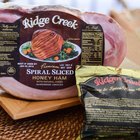
Cooking Instructions for a Ridge Creek ...

Does a Roaster Oven Cook Faster Than ...
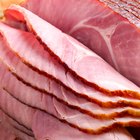
How to Make Spiral Ham in Crock-Pot

Should I Glaze Ham if I'm Baking in a ...

How to Use Reynolds Oven Bags

How to Defrost a Bone-In Ham

Difference Between Cooking in a Regular ...
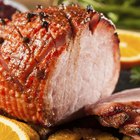
How to Cook Ham in a Roaster

How to Make Glaze From Granulated Sugar
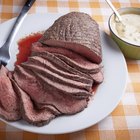
How to Cook a Roast in a Bag

How to Reheat a Ham

How to Keep Cupcake Wrappers From ...

How to Glaze Gray Hair
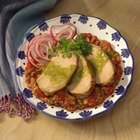
How to Bake a Pork Loin Center Half
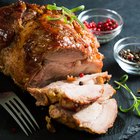
The Ultimate Crock-Pot Ham Recipe
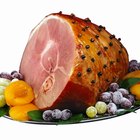
How to Store Uncooked Smoked Ham

How Do I Roast a Picnic Ham?

How to Heat Pre-Cooked Hams

How to Cook a Beef Roast in a Roaster ...
References
- On Cooking: A Textbook of Culinary Fundamentals; Sarah Labensky, et al.
Resources
Writer Bio
Fred Decker is a trained chef and prolific freelance writer. In previous careers, he sold insurance and mutual funds, and was a longtime retailer. He was educated at Memorial University of Newfoundland and the Northern Alberta Institute of Technology. His articles have appeared on numerous home and garden sites including GoneOutdoors, TheNest and eHow.
Photo Credits
Jupiterimages/Comstock/Getty Images